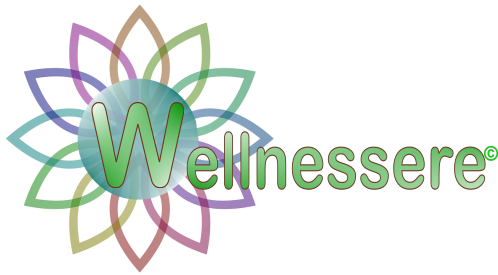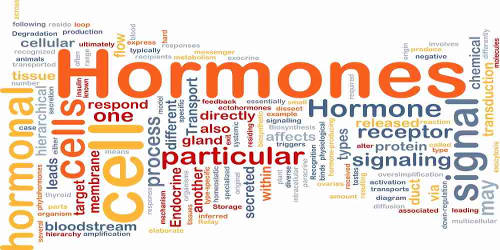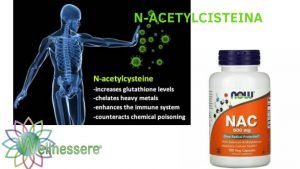Cortisol affects all cells in our body, ensuring our survival. Small surges of cortisol play beneficial effects on the immune system by stimulating its anti-infectious functions and promoting its anti-inflammatory actions.
In stressful situations, it is cortisol(assisted by aldosterone) that sustains blood pressure, water-electrolyte balance, heart rate, circulation and blood supply to vital organs ;the hormone also promotes the supply of fatty acids and glucose in order to optimize energy production in the organs most involved in the stress reaction, such as the heart,lungs, muscles and nervous system; under these circumstances, the hormone allows us to better cope with and overcome the situation perceived by the body as dangerous, as well as to control the dangerous inflammatory phenomena that characterize the stress reaction. It is thanks to cortisol, a modulator of catecholamines, that we are able to face stressful situations with confidence and a positive mental attitude without panicking and being paralyzed by anxiety. In fact, the negative perception of stress (distress) caused by high levels of adrenaline and noradrenaline,is at the root of many diseases such as cardiovascular, degenerative and cancer itself.
Small daily doses of cortisol also improve mood and cognitive processes such as the ability to concentrate and memorize experiences especially in stressful situations, promoting ideation, fluidity and clarity of thought;even the speed with which important decisions are made in high-stress situations, we owe precisely to the action of cortisol.
Any living being could not live without the vital effects of cortisol, it would succumb to the slightest stress as it happens in nature to weaker and older animals. Cortisol is produced physiologically by the fasciculated area of the cortex(outermost area) of the adrenal glands.The hormone circulates in the blood predominantly (equal to 94-95%) in an inactive form that is conjugated by two plasma proteins(albumin and transcortin or CBG), while the free and biologically active form is equal to 5-6%.The hormone is secreted by the adrenal glands according to a daily or circadian rhythm with a morning peak around 8 to 9 a.m. and an evening minimum , between 10 p.m. and midnight.
This circadianity means that cortisol can exert its vital functions throughout the day and be metabolized in the afternoon and evening phases. In this way, all cells take advantage of its proenergetic effects without being clogged and intoxicated by its action. Under these optimal conditions, the hormone can exert its essential actions for cellular functions without creating damage.The circadian rhythm of the hormone is regulated by a self-regulatory mechanism that is brought about by the presence of certain receptors that are scattered in the hippocampus, hypothalamus and other brain areas.
These act as sensors deputized to record the daily (the first) and under stress (the others) levels of cortisol and to limit its production beyond certain values; this is done through the inhibition of CRH and ACTH, released by the hypothalamus and pituitary gland, respectively.In practice, this regulatory system, behaves as a kind of automatic servobrake that,upon sensing certain hormone levels,retroacts by blocking the signals that give rise to the cascade. For this reason it is named ''feedback'' or negative retrocontrol and is common to many hormonal axes(sex hormones and thyroid hormones) with the purpose of ensuring their realization of circadian rhythms, mutual harmonization as well as modulation of dangerous hormonal excesses.
The action of cortisol is also regulated by other physiological mechanisms:
-the synergistic production by the adrenals of dhea and aldosterone, which, by influencing acth levels, indirectly regulate cortisol production by the adrenals.
-the enzymatic activity of certain tissues(bones, liver, adipose tissue, immune system cells, kidneys, nervous system) that produce cortisol from inactive precursors (cortisone) and vice versa.Dhea itself, through its metabolite keto-dhea, promotes the transformation of cortisol into cortisone.
-Cortisol synthesis activator gene expression,is inhibited by dhea while being stimulated by the notorious inflammatory cytokines that accumulate with aging and in chronic stress.
This perfect and complex mechanism of controlling the actions and synthesis of cortisol is achieved because, as the hormone performs catabolic functions, high and constant levels of cortisol would lead to negative consequences on all cellular functions.In this way, the action of the hormone is limited to the periods of the day when it is most needed, ensuring us psycho-physical sprint as well as optimal activity of the immune, cardiovascular, nervous and all systems. At the same time low afternoon and evening levels of the hormone, facilitate the realization of the anabolic and reparative phase under the influence of growth hormone and the melatonin, which in turn inhibit nocturnal cortisol production.
As is often the case in nature, the actions of one hormone are controlled by the effects of another hormone; just think of the modulatory actions of progesterone on estrogen and the much touted balance between insulin and glucagon.Dhea and cortisol, too, act in concert modulating each other and thus influencing many functions with often conflicting actions that regulate the nervous and immune systems, energy metabolism ,fat, sugar and protein metabolism, the production of good and bad eicosanoids, and muscle, bone, skin and connective tissue metabolism. Dhea has its own circadian rhythm that is less obvious and defined than that of cortisol; it is produced in significant doses(it is the most prevalent steroid in the human body) after the first few years of life, reaching a peak between the ages of 20 and 30 years and then gradually waning as the years go by. Around the age of 70 to 80 years, dhea levels are only 10-20% compared with the peak in youth. The reduced production of dhea with age, called adrenopause, can be attributed to a morphological involution of the cortical area of the adrenals (reticular zone), where the hormone is synthesized.
Also contributing to this phenomenon are the negative effects on the synthesis of the hormone exerted by the inflammatory cytokines that accumulate with age.The hormone, like pregnenolone, is also produced to a lesser extent by the glial cells of the nervous system,the gonads and the skin.The secretion of dhea, like that of cortisol and aldosterone, is regulated by pituitary acth.The hormone circulates in the blood predominantly as Dhea'S or sulfate, which is a depot form conjugated to plasma proteins (but with obvious neurological effects);this is transformed in peripheral tissues by certain enzymes called sulfatases into free or biologically active Dhea.
Dhea'S is also the form that is routinely dosed in the blood as it is more stable than the free form.Many of the effects of dhea can be attributed to its direct genomic and nongenomic actions, others to its transformation in peripheral tissues into androgens, estrogens and other metabolites (androstenediol,androstenetriol, keto-dhea).One of the prominent roles of dhea, is to regulate the action of cortisol, influencing its production and antagonizing its negative effects especially on the nervous and immune systems(of the thymus in particular).
On the other hand, cortisol itself, tends to modulate the synthesis of dhea, affecting the production of acth. As we shall see later,both hormones are absolute players in the stress reaction.The two hormones influence the activity of all apparatuses,carrying out primarily cortisol catabolic actions and dhea anabolic functions; Dhea enhances the proenergetic,anti-inflammatory and anti-stress effects of cortisol, while hindering its negative actions that are a consequence of excessive catabolism(loss of bone and muscle mass, aging of the skin) as well as other actions(diabetes, obesity, immunodepression, neurotoxicity).
The optimal ratio between dhea and cortisol, both assessed by morning plasma dosage, is that of 25 to 30, or between 15 and 25.To these values must be returned in order to optimize the harmonious functioning of the two hormones and all those apparatuses that are affected by them.In particular it is the nervous and immune systems that are particularly affected by this ratio.It seems clear that it is of fundamental importance to evaluate also the absolute values of the plasma or salivary levels of the hormones,which if both reduced by equal degrees,would give an almost normal ratio.
Dhea-Cortisol in Aging.
With aging there is usually a sharp and impressive decline in plasma levels of dhea, its metabolites in the 24-hour urine (17-ketosteroids), and other anabolic hormones such as testosterone, melatonin, and gh, while plasma total and free cortisol and its metabolites in the 24-hour urine (17-hydroxycorticosteroids), may be slightly increased, stable, or less markedly reduced.This may favor, due to a dominance of cortisol over dhea and thus catabolism over anabolism, the onset of many diseases related to the aging process (Hechter 1997-Bruin 2002-Valenti 2002-2004):
1. osteoporosis, loss of muscle mass (sarcopenia),thinning and aging of the skin,slowing of wound healing processes.
2. depression, mood disorders, memory loss especially declarative memory.
3. immunosenescence characterized on the one hand by weakened immune defenses with increased susceptibility to infections and cancers, and on the other hand by increased chronic inflammatory diseases.
4. abdominal-type obesity due to peripheral resistance to insulin and leptin associated with abnormalities in blood fats,atherosclerosis,hypertension,water retention,diabetes and increased incidence of cardiovascular disease.
5. arthrosis.
6. abnormalities and asynchronies in other hormone functions.
In other subjects, whose adrenals tend to be depleted due to chronic stress(adrenal fatigue), there may be observed, in addition to that of dhea and its urinary metabolites, a more or less obvious reduction in the levels of total and free plasma cortisol (usually of little diagnostic value since they are subject to fluctuations) and especially of free cortisol (an index of the daily production of the biologically active fraction) and its metabolites (an expression of the degree of utilization and thus of peripheral metabolism) in the 24-hour urine.
In some situations,a paradoxical phenomenon can occur characterized by higher or lower plasma levels,associated with a decrease in its urinary metabolites,an expression of reduced utilization of the hormone caused by the decreased sensitivity of peripheral receptors of the same hormone.In essence,cortisol accumulates in the blood when it is not adequately utilized by the tissues.In both of these situations,characteristic deficiency symptoms (or inadequate utilization or metabolism of the hormone) will be observed such as:
-Profuseful fatigue especially after stress, in an upright position, in the morning(difficulty waking up early) and in the early afternoon with evening migloration.
-feverish especially after stress
-difficulty controlling stress with mood swings, aggression, panic attacks, concentration problems, confusion, drowsiness, and mental lapses.
-improvised hypoglycemic crises manifesting as irritability, sweating and cravings for sweets that promote weight gain
-inordinate sense of hunger toward salty foods
- lurching, tachycardia, dizziness when standing, fainting, expression of low blood pressure.
-allergies, hypersensitivity to chemicals and additives, hives, eczema, psoriasis, gastritis, colitis, conjunctivitis, arthritis, autoimmune diseases, various inflammations
-hyperpigmented patches on skin and mucous membranes (caused by the melanin-stimulating effects of high acth values)
Many of these complaints tend to become more pronounced following even minimal mental and physical stress and in an upright position and improve with rest and in a lying position.
In all these cases, cortisol deficiency symptoms,are associated with those due to dhea deficiency such as:
-loss of pubic and axillary hair and to the limbs (male)
-dry skin, hair and conjunctivae
-susceptibility to infection and chronic inflammation(rheumatoid arthritis)
-susceptibility toward diabetes, weight gain, dyslipidemia , cardiovascular disease, and osteoporosis.
-joint pain
-loss of tone and muscle mass, inflaccidization of the abdomen.
-tiredness,depression,mood swings,decreased libido and erectile power,memory problems.
-poor resistance to stress and particularly toward noise.
-accumulation of fat at the abdominal site.
DHEA and Cortisol: a question of rhythm.
The most frequent abnormalities of the two hormones that are observed with aging involve qualitative perturbations of circadian rhythms. With age, there is a flattening of the cortisol curve, which lacks the usual morning peak and with the possibility of abnormal evening peaks (Ferrari 2001).In essence, the hormone is produced incorrectly:reduced in the morning with the appearance of characteristic deficiency symptoms and evening presence with sleep disturbances, anxiety, irritability, and unmotivated evening hunger.
This naturally results in an overall daily production and metabolism of it being slightly altered.The dhea curve also tends to flatten even more noticeably. Since the circadian rhythm of cortisol and dhea affect the daily rhythm of other hormonal systems as well as the immune system,they too are affected,opening the door to anarchy and hormonal and immunological desynchronization.
Dhea-cortisol balance: what treatments.
Depending on the presenting clinical and laboratory picture, we might use dhea alone or in combination with cortisol and possibly microdoses of melatonin to be administered late afternoon with the aim of preventing the abnormal evening cortisol spike and thus restoring the harmony of circadian rhythms.
It is very important to remember that, when cortisol is prescribed,it is appropriate to proceed with a simultaneous administration of dhea and other anabolic hormones, with the aim of enhancing its positive actions especially anti-inflammatory, while limiting its negative catabolic-type effects (Cutolo 1999).Relaxation techniques such as yoga, transcendental meditation and ''Stress Management'' techniques,are also of great help in harmonizing the relationship between the two hormones.
The role of pregnenolone on Dhea-Cortisol balance.
As repeatedly argued, pregnenolone being a precursor of both dhea and cortisol and being utilized by the body according to the needs of the moment (adaptogenic function), it can be administered in the various situations in which a deficiency of dhea is observed associated or not with that of cortisol and in particular in the pathologies that are an expression of the various phases of chronic stress.
Of course, their conversion will always have to be verified both qualitatively and quantitatively.
If this is absent or partial, pregnenolone should be substituted or combined with one or both hormones depending on the circumstances. They will benefit from this therapy, especially those cases of chronic inflammatory diseases such as rheumatoid arthritis,fibromyalgia or those patients with chronic fatigue in whom a simultaneous deficiency of both dhea and cortisol is frequently observed.
taken from http://www.studioapolimeni.com





